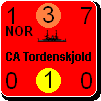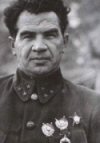ericbabe
Posts: 11927
Joined: 3/23/2005
Status: offline

|
JeanUSARMYGUARD,
Thank you for the kind words. We did an awful lot of testing to try to make sure that it would be very hard for the USA to win battles against the CSA in the early part of the war. One of our top priority design goals was to try to reproduce the pace of the war as best we could, and we felt that if a moderately experienced detailed combat player could go into Fredericksburg in the fall of '61, capture much of the CSA army, then march on to take Richmond, then in this case the game would not be very enjoyable to a majority of players. I realize that some of the factors -- such as the will-to-fight, the morale rules, the command and control rules, and the line of communication ("threat zone") rules -- do make the game frustrating for some players, especially newer players who are not used to all the details of the system. Players do like to have absolute control over their units, and the green units, who are admittedly hard to control, can be frustrating; still, there are ways to mitigate the "misinterpretation" of green units, such as by giving them orders to move to landmarks (terrain not adjacent to any similar type of terrain or to named terrain), or by giving them move orders with less than their full allotment of movement points, so that action left to adjust their position (even changing their facing can help immensely) if they misinterpret the original order. I sometimes worry that players will end up like Sherman after First Bull Run after players have their first experience commanding green units in battle. 
The strategy for the USA player is, indeed, to work on increasing the quality of their units -- not just in terms of weapons, but also staff ratings, quality, general ratings, upgrades, brigade attributes, and so forth. It's also true that an important means by which the Union increases the quality of its troops -- especially its green troops -- is by fighting battles that it ends up losing.
Union commanders early in the war attempted many Napoleonic-style maneuvers: pincer attacks, turning and flanking maneuvers. They generally failed because the quality of the junior officers and divisional staffs wasn't sufficiently prodigious to allow these sorts of complicated maneuvers to be executed with proficiency. Units attempting to march on the flank often showed up piecemeal or in the wrong locations or at the wrong times. Our C&C rules attempt to simulate not only the early difficulty with which the Union had in coordinating even simple battlefield tactics, but they are also intended to model the improvement over time which the Union experienced that eventually allowed their commanders to execute these sorts of maneuvers with puissance.
I am surprised that you have difficulties creating and replacing brigades as the USA, however. There may be some important point of game mechanics you might be missing, as this is generally not a problem for the USA. Remember that brigades on the highest supply priority (and in rail supply) receive the most replacements. Foraging brigades, or brigades under amphibious supply, receive very few -- if any. Build lots of camps; don't be afraid to use muster and even conscription early in the war: those conscripts need time to get their quality built up.
_____________________________
|
 Printable Version
Printable Version


















 New Messages
New Messages No New Messages
No New Messages Hot Topic w/ New Messages
Hot Topic w/ New Messages Hot Topic w/o New Messages
Hot Topic w/o New Messages Locked w/ New Messages
Locked w/ New Messages Locked w/o New Messages
Locked w/o New Messages Post New Thread
Post New Thread